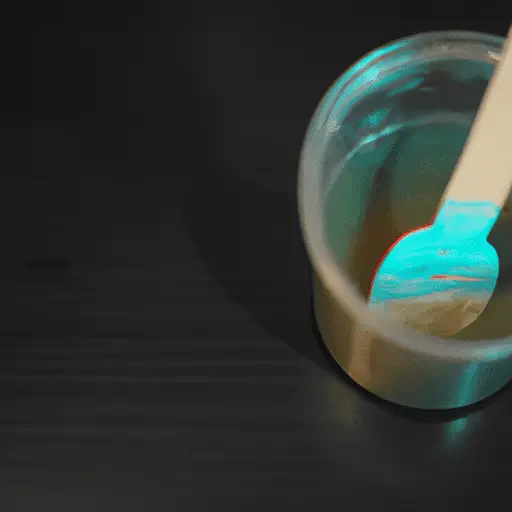Mastering the Art of Home Chemical Peels
-
Table of Contents
- Mastering the Art of Home Chemical Peels
- Key Takeaways
- Introduction: The Rise of DIY Skincare
- Understanding Chemical Peels
- Choosing the Right Ingredients
- Preparation and Aftercare
- Consulting with a Professional
- FAQ Section
- 1. Are home chemical peels safe?
- 2. How often should I do a home chemical peel?
- 3. Can I use other skincare products after a chemical peel?
- 4. What should I do if my skin reacts badly to a chemical peel?
- 5. Can I do a chemical peel if I have sensitive skin?
- Conclusion: The Art of Home Chemical Peels
- Further Analysis
Mastering the Art of Home Chemical Peels

[youtubomatic_search]
Key Takeaways
- Home chemical peels can be a cost-effective and convenient alternative to professional treatments.
- Understanding the types of chemical peels and their ingredients is crucial for safety and effectiveness.
- Proper preparation and aftercare are essential to achieving the best results and minimizing potential risks.
- Consulting with a dermatologist or skincare professional before starting home chemical peels is highly recommended.
- Home chemical peels are not suitable for everyone and may not be effective for certain skin conditions or types.
Introduction: The Rise of DIY Skincare
With the increasing popularity of DIY skincare, more and more people are turning to home chemical peels as a cost-effective and convenient alternative to professional treatments. However, mastering the art of home chemical peels requires a thorough understanding of the types of peels, their ingredients, and the proper preparation and aftercare. This article aims to provide a comprehensive guide to safely and effectively performing chemical peels at home.
Understanding Chemical Peels
Chemical peels are skincare treatments that use acids to exfoliate the skin, promoting cell turnover and revealing a fresher, smoother complexion. They can help address a variety of skin concerns, including acne, hyperpigmentation, and signs of aging. However, not all chemical peels are created equal. They can be categorized into three types: superficial, medium, and deep peels, each with different strengths and effects on the skin.
Choosing the Right Ingredients
Common ingredients in home chemical peels include alpha hydroxy acids (AHAs) like glycolic and lactic acid, beta hydroxy acids (BHAs) like salicylic acid, and trichloroacetic acid (TCA). Each ingredient has unique properties and is suitable for different skin types and concerns. For example, AHAs are water-soluble and are effective for dry and sun-damaged skin, while BHAs are oil-soluble and are ideal for oily and acne-prone skin.
Preparation and Aftercare
Proper preparation and aftercare are crucial to achieving the best results and minimizing potential risks. Before a peel, it’s important to cleanse the skin thoroughly and avoid any products that may irritate the skin. After a peel, it’s essential to moisturize the skin, avoid sun exposure, and use a broad-spectrum sunscreen.
Consulting with a Professional
While home chemical peels can be a convenient and cost-effective option, they are not suitable for everyone. Certain skin conditions or types may not respond well to chemical peels, and improper use can lead to skin damage. Therefore, it’s highly recommended to consult with a dermatologist or skincare professional before starting home chemical peels.
FAQ Section
1. Are home chemical peels safe?
Yes, home chemical peels can be safe if used correctly. However, they can cause skin irritation or damage if used improperly. It’s important to follow the product instructions and consult with a professional if you have any concerns.
2. How often should I do a home chemical peel?
The frequency of home chemical peels depends on the type and strength of the peel. Generally, superficial peels can be done weekly, while medium peels should be done monthly. Deep peels should only be performed by a professional.
3. Can I use other skincare products after a chemical peel?
After a chemical peel, it’s best to avoid any products that may irritate the skin, such as retinoids or other acids. Instead, focus on hydrating and soothing products.
4. What should I do if my skin reacts badly to a chemical peel?
If you experience severe redness, burning, or blistering after a chemical peel, stop using the product immediately and consult with a professional.
5. Can I do a chemical peel if I have sensitive skin?
If you have sensitive skin, it’s best to start with a mild peel and gradually increase the strength as your skin tolerates. Always do a patch test before applying the peel to your entire face.
Conclusion: The Art of Home Chemical Peels
Mastering the art of home chemical peels requires a thorough understanding of the types of peels, their ingredients, and the proper preparation and aftercare. While they can be a cost-effective and convenient alternative to professional treatments, they are not suitable for everyone and may not be effective for certain skin conditions or types. Therefore, it’s highly recommended to consult with a dermatologist or skincare professional before starting home chemical peels.
[youtubomatic_search]
Further Analysis
As the popularity of DIY skincare continues to rise, it’s important for consumers to be well-informed about the products they use. Home chemical peels can offer significant benefits, but they also come with potential risks. By understanding the types of peels, their ingredients, and the proper preparation and aftercare, individuals can safely and effectively perform chemical peels at home.


